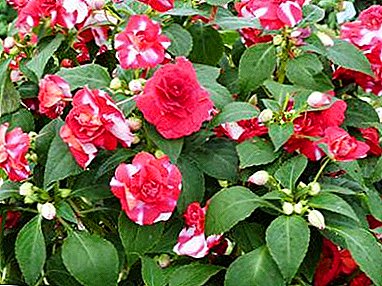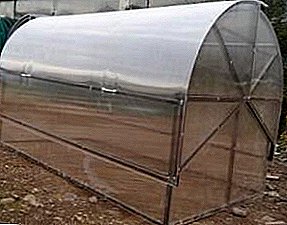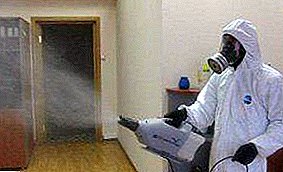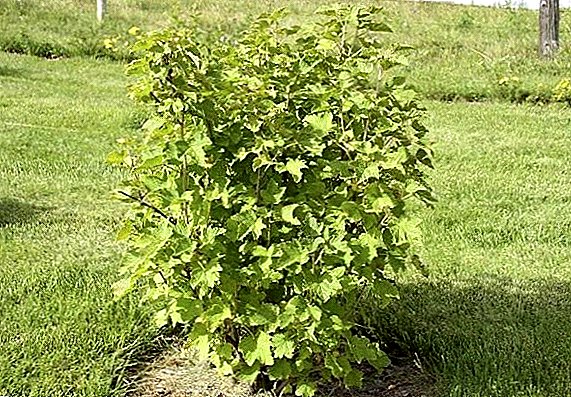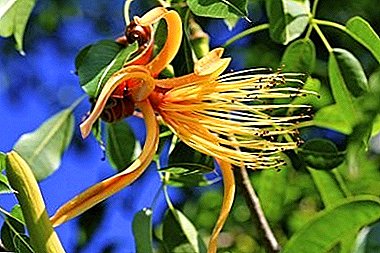 Due to their resistance to diseases, ducks are considered among the desired birds for breeding in farms. But even these birds are not immune from infections and bird diseases. The article will tell about infectious and non-infectious diseases of domestic ducks, as well as what should be done to prevent these pets from harming them.
Due to their resistance to diseases, ducks are considered among the desired birds for breeding in farms. But even these birds are not immune from infections and bird diseases. The article will tell about infectious and non-infectious diseases of domestic ducks, as well as what should be done to prevent these pets from harming them.
Causes of disease in ducks
Ducks are ill for various reasons, but most often their conditions are affected by housing conditions and diets, which can weaken birds and make them susceptible to adverse conditions. 
Here are some factors that affect their well-being:
- infections and parasites transmitted from other birds;
- non-compliance with sanitary standards;
- monotonous and unbalanced food;
- small house;
- house without ventilation and lighting;
- there is no walking and water;
- one room contains ducks of different ages;
- avitaminosis.
Important! If the bird has unusual symptoms, an urgent consultation with a veterinarian is necessary to establish an accurate diagnosis and start treatment immediately.
Major duck diseases
Most ducks are prone to infections, among which are parasitic invasions and fungal diseases. Also, the bird can suffer from non-communicable diseases caused by a weakened immune system.
Also find out what chickens, indoutki, turkeys and geese are sick of.
Non-infectious
Non-infectious diseases are diseases resulting from poor-quality bird care.
Avitaminosis
Avitaminosis is the result of unbalanced nutrition and lack of ultraviolet radiation. The table shows the varieties of avitaminosis in birds, symptoms, treatment and preventive measures:
| Variety avitaminosis | Symptoms | Treatment | Prevention |
| Avitaminosis A | Beak effusions, lethargy, poor appetite, inflamed conjunctiva, dry mucous membranes, with ulcers. | Add to the feed 2-3 drops of fish oil per day (15 days). | Enrich the diet with grass flour. |
| Vitamin B1 | Decreased activity, lack of appetite, drooping of the head, growth retardation, convulsions | Enrich the diet with greens, bran, germinated grain, yeast. | The diet is the same as in the treatment. |
| Vitamin deficiency B2 | Deformed limbs, no appetite, low hemoglobin, growth inhibition. | Add yeast, yogurt, kefir, sour cream, greens, and fishmeal to feed. | The diet is the same as in the treatment. |
| Vitamin B12 | No egg-laying, low hemoglobin, lack of appetite, lag of sexual development. | Add sour milk, kefir, sour cream, bone meal, liver. | The diet is the same as in the treatment. |
| Rickets | Inhibition of growth, deformed and softened beak and bones, weakness in the paws, softened egg shells. | Adding fish oil, seashells, chalk, bone meal to food. Organization of walking in the sun. Irradiation with ultraviolet lamps. | Similar actions. |
| White muscle disease | Closed eyelids, no appetite, no egg-laying. | 1 drop of tocopherol with each meal. | Add to the food grass meal, wheat, milk whey. |

Goiter diseases
Ducks often suffer from goiter diseases due to poor diet and indiscriminate nutrition:
- sticky food;
- coarsely chopped vegetables;
- stuck in the goiter of a foreign object.
There are two types of this pathology:
| Goiter disease | Symptoms | Treatment |
| Qatar | Softened and swollen goiter, lack of appetite, beak opened, ruffled plumage, shortness of breath, discharge from the nostrils and beak with an unpleasant odor. | Drain the goiter. During the day, transfer to drink with hydrochloric acid. From the second day to feed liquid porridges on milk, gradually introducing a normal diet. |
| Occlusion | Goiter hard, to the touch is determined by a foreign body. The bird does not eat, ruffled or shakes its head. | Appeal to a veterinary clinic, because surgical intervention is required. The specialist will open the goiter, remove the stuck object and stitch it. |

Important! Only a veterinary specialist can carry out a foreign object from a goiter. If you try to carry out this procedure yourself, it may result in the death of a bird.
Pica
Ducks suffer from the perverted appetite against the background of indiscriminate absorption of feed and various debris. We describe the symptoms of this pathology and a possible solution to the problem:
| Symptoms | Treatment |
| Eating stones, debris, sawdust, fine wood chips, glass, etc .; shell spelling; excited behavior | Isolate the sick bird from the rest. Organize a diet with meat and bone meal and fish meal, dairy products, meat waste. If the measures taken are not effective - the bird is slaughtered. |

Cloaca inflammation
Females suffer from inflammation of the cloaca due to the lack of vitamins E and A in the diet, as well as mating on land. Below are signs of inflammation of the cloaca, as well as methods for its elimination and preventive measures:
| Signs of illness | Treatment | Prevention |
| The down feathers of the cloaca are polluted; bird depletion; reduced egg production; ulcers and redness of the cloacal mucosa. | Tetracycline ointment to lubricate the area of the cloaca. Wash the cloaca with furatsilina solution. | Add grass meal and alfalfa to the feed; do not overfeed with animal feed; disinfect the room. |

Inflammation of the oviduct
The oviduct is inflamed if the duck lays large eggs. Pathology is of two forms: light and heavy.
| The form | Symptoms |
| Lightweight | Difficult testicles, accompanied by the release of blood. |
| Heavy | The deposition in the oviduct coarse cheesy discharge, causing blockage of the oviduct, because of which the bird loses weight. |
Inflammation of the oviduct is not treated, and the sick bird is slaughtered.
Oviduct prolapse
Egg breeder can fall out for two reasons:
- The production of excessively large testicles.
- Frequent egg-laying.

Help that can be provided to a bird with this problem:
- Disinfect the oviduct with a cool chlorhexidine solution.
- Fill the oviduct with Vaseline Cream.
Genital inflammation
Males suffer from this inflammation. The reason for this violation is the pairing is not in the reservoirs, and on the range. The problem is solved as follows:
| Treatment | Preventive measures |
| After consulting the veterinarian, flush the cloaca with warm water and treat with special veterinary drugs. | Keep ducks near the pond. |
Check out the features of breeding mandarins, musk ducks, Star-53 ducks, Bashkir ducks, Peking ducks, as well as Gogol ducks and a blue favorite.
Lack of feathers
Usually, this pathology affects young birds up to 50 days old. The cause of baldness is unbalanced nutrition, without mineral supplements and greens. In addition, the young are observed other related health problems:
| Symptoms | Prevention |
| Lack of feathers; growth and developmental delay; poor appetite; apathy. | Change of zoohygienic conditions, enrichment of feed with minerals and green plants, free access to drinkers. |
Goiter obstruction
Causes of goiter blockage are the following factors:
- consumption of monotonous and dry food;
- mineral and vitamin deficiency in feeding;
- lack of fluid intake;
- content in cells.

Signs of blockage of goiter in poultry, as well as therapeutic and preventive measures:
| Symptoms | Treatment | Prevention |
| Depressed state; reduced appetite; dense to the touch and enlarged goiter; reduced egg production; development of anemia. | Remove contents from the goiter by rinsing or gently massaging and squeezing the food mass through the mouth. In case of a severe disease in a veterinary clinic, a layer-by-layer incision of the skin and goiter shell and removal of its contents is made. Then goiter is treated with disinfectants and stitched. | Do not overfeed ducks and do not give swelling feed; establish a drinking regime; feed with mineral and vitamin feed. |
Did you know? Although the duck neck is much shorter than that of a giraffe, it has more cervical links.
Infectious
The infectious group of duck diseases is the most dangerous, since it has a rapid spread to other individuals, which can be fatal even before the provision of medication. Duck infections can be transmitted to humans.
Aspergillosis
Aspergillosis is a fungal infection that affects the lung ducks. The infection most often affects young animals, but adults can also become infected. Birds are infected through feed, soil, eggs. Juveniles suffer from an acute form with a percentage of mortality of up to 65%, adult birds - chronic. The latent period of infection is 4-5 days. Signs of infection, therapeutic and prophylactic measures: 
| Symptoms | Treatment | Prevention |
| Loose stools; conjunctivitis; cough; copious release of foam from the beak; shortness of breath with wheezing; decreased appetite; convulsions; lethargy. | Add 0.05% solution of copper sulfate or potassium iodide to the troughs, and nystatin as food (as prescribed by a doctor). | Regularly ventilate the sunshine, inhale healthy individuals with potassium monochloride (0.5 ml per 1 cubic meter), disinfect the room and equipment, and give food without mold. |
Pasteurellosis (cholera)
There are two types of pasteurellosis:
- Acute, damaging mucous membranes.
- Chronic, with damage to certain organs and respiratory tract.

Ways of infection with pasteurellosis:
- feed,
- water,
- inventory,
- air,
- bedding
- litter,
- ticks.
Symptoms of pasteurellosis and a possible solution to the problem:
| Symptoms | Treatment / Prevention |
| Poor appetite; lethargic condition; thirst; swollen joints of the limbs; shortness of breath with wheezing; outflow from the beak; yellow-green diarrhea with blood; high body temperature. | At present, the treatment has not been worked out, so the meat of ducks that have had pasturellosis cannot be eaten: they are slaughtered and discarded. Disinfect the room and inventory. |
Aspergillosis also sick chickens.
Tuberculosis
This infectious disease is dangerous because it can manifest itself only several months after infection. Infection of a bird occurs through the following factors:
- air in duck
- feed,
- eggs,
- droppings of sick ducks.
Symptoms of tuberculosis ducks and possible treatment:
| Symptoms | Treatment |
| Swollen joints; knotty formations on the skin and mouth. | Treatment is inappropriate, because the infected individuals die. You can eat meat only those ducks that do not have the clinical manifestation of the disease, and only after sufficient heat treatment. After the death of carcasses of birds burned or buried deep in the ground. Disinfect the room and inventory. |
 The causative agent of this infection is salmonella bacillus, which provokes bacillary diarrhea (pullorosis) in young animals. In the acute form, the infection mainly occurs in 1-2 week-old chicks. Mortality occurs on day 3 after infection and is up to 80%. Adults are rare and asymptomatic, with a chronic course of the disease, as a result of which a duck has an ovary deformed.
The causative agent of this infection is salmonella bacillus, which provokes bacillary diarrhea (pullorosis) in young animals. In the acute form, the infection mainly occurs in 1-2 week-old chicks. Mortality occurs on day 3 after infection and is up to 80%. Adults are rare and asymptomatic, with a chronic course of the disease, as a result of which a duck has an ovary deformed.
Did you know? In Chinese and Japanese culture, ducks are considered a symbol of marital happiness, loyalty, beauty, bliss, and are identified with the signs of yin and yang.
Symptoms and possible solution to the problem:
| Symptoms | Treatment |
| Pale yellow diarrhea; decreased activity and drowsiness in young; half-closed eyes; ducklings constantly squeak; lowered wings, wide apart legs, retracted heads; rapid breathing through the open beak. | Treatment is inappropriate, sick birds are slaughtered and disposed of. Disinfect the room and inventory. |
Contagious rhinitis
The disease ducks runny nose occurs in the autumn, with the first cold, and has a rapid spread to all livestock. Ways of transmission - from infected to healthy birds. Symptoms, method of treatment and prevention measures: 
| Symptoms | Treatment / Prevention |
| Abundant discharge from the nostrils and eyes. | Instill the nose and eyes with a weak solution of potassium permanganate. Fumigate the duckling with manganese vapor. |
Typhus
Typhoid infection affects adults, which in the acute course of the disease die within 1 day. Young animals and birds with strong immunity suffer from a rare and non-acute form. Symptoms of non-acute form and possible therapy:
| Symptoms | Treatment |
| Yellow-green diarrhea; loss of appetite; weight loss; lethargy and impaired coordination of movements; ruffled feathers. | Treatment is impossible, sick birds are slaughtered for meat. Utyatnik disinfect. |
Important! Every poultry farmer should know the main symptoms of a diseased bird: drowsy and lethargic behavior, lack of appetite and ruffled feathers.
Viral hepatitis ducklings
Viral hepatitis is a dangerous disease of ducklings in the first week of life, affecting the liver and leading to almost 100% death. If the ducklings fall ill in the second week of life, then the survival rate is only two or three out of ten chicks.  As they grow older, ducklings become immune to this virus. In adulthood, the symptoms may not appear, but the birds will be carriers of the virus for another two years. Causes of viral hepatitis infection:
As they grow older, ducklings become immune to this virus. In adulthood, the symptoms may not appear, but the birds will be carriers of the virus for another two years. Causes of viral hepatitis infection:
- discharge in the form of mucus from the nose and eyes of sick birds,
- feces,
- feed,
- water,
- bedding
- house utyatnika
- inventory.
| Symptoms | Prevention |
| A bunch of ducklings in a secluded place; sluggish behavior; falling to the side; convulsions; swollen eyelids and conjunctivitis; labored breathing; bluish tint mucous. | Purchase of uninfected eggs or chicks. Separate content of adult birds and young. Introduce a special serum to the recovered ducks. Timely disinfection and whitening of a duckling. Vaccinating newborn ducklings. |
Viral hepatitis is not treated due to transient infection and the imminent death of young animals.
Coccidiosis
Coccidiosis is caused by coccidia parasites. Basically, young animals become sick at 1-2 months of age. Coccidia settle on the intestinal mucosa and parasitize. As a result of their mass reproduction, the intestinal epithelial layer dies, and toxins and poisons released by coccidia cause its inflammation and necrosis. 
Causes of parasite breeding:
- too wet conditions;
- infected droppings, pond and soil;
- infected troughs, drinkers and inventory;
- rodents and wild ducks.
| Signs of | Treatment and Prevention |
| Lack of appetite; apathy and lethargy movements; brown diarrhea with bloody mucus; egg laying reduction; dehydration; weight loss. | To treat sick birds is meaningless, they are isolated from the common herd. Carry out measures for disinfestation. Ensure that ducks do not come into contact with their wild brethren. Keep the birds near the clean water. Disinfect utyatnik. |
Learn how to breed ducks at home, how to raise ducks in an incubator, how to feed ducks and how to pluck a duck without hemp.
Helminthiasis and other parasitic duck diseases
The duck herd often becomes infected with helminths and other parasites that can spread throughout the body of birds, disrupting the functioning of all organs.
Helminthic diseases
Helminths can become infected by the herd through water and feed. Signs of helminthic invasion, remedies and preventive measures:
| Signs of | Treatment and Prevention |
| Weakening of the immune system; decreased activity; diarrhea; birds rush less; dull plumage; weight loss. | The treatment of helminthic invasions is complex and does not always produce the desired effect. More effective will be preventive measures, consisting in taking antihelminthic drugs. Disinfection of premises and inventory. |

Echinostimatosis
The fluke flukes cause the disease, parasitic in the intestines of young ducks and causing their death. The cause of infestation by parasites is the feeding of ducks to inhabitants of open reservoirs that carry trematodes. Birds become infected during the entire summer season.
Symptoms of invasion and treatment:
| Symptoms | Treatment / Prevention |
| Lethargy and apathy; diarrhea; weight loss; weakened immunity. | Treatment depends on the weight and age of the ducks. Antiparasitic drugs are added to food. Keeping birds on a clean pond. Conducted thorough disinfection of premises. The corpses of dead birds are destroyed. |
Important! Be sure to adhere to the doses prescribed by the veterinarian to eliminate insect infestation.
Outdoor parasites
External parasites that disturb ducks and have a negative impact on their development and growth include the following insects:
- lice
- ticks
- puff-eaters
 Birds are infected from contact with parasitized individuals. Juveniles may be infected by their parents. Signs of parasitic infection and control measures:
Birds are infected from contact with parasitized individuals. Juveniles may be infected by their parents. Signs of parasitic infection and control measures:| Signs of | Therapeutic measures |
| Decrease in egg-laying; anxiety; developmental delay in chicks; reduced appetite. | Set the ash-sand bath on the run. Treatment with sulfur-mercury ointment of the cloaca and the area under the wings. Regular cleaning of litter area for walking. Thorough disinfection of the duckling with karbofos and chlorophos. Whitewashing walls utyatnika. The destruction of the corpses of dead birds. |
Duck Disease Prevention
Poultry diseases are associated with poor-quality care and malnutrition. In order to prevent pets from reducing immunity due to poor maintenance, as well as to avoid infection with various infections and parasites, special attention should be paid to preventive measures:
- Keep the bird in a dry, clean, spacious utyatniki, with good ventilation.
- Provide ducks with a timely, complete and high-quality diet.
- Regularly update the water in drinking bowls.
- To be attentive to the behavior of pets and timely identify the diseased individuals.
- Contain separately adult birds and offspring.
- Periodically carry out deworming of birds.
- Constantly clean the yard and pond.
- Carry out deratization using traps and traps.
- At the entrance to the duckling bed to lay a mat for disinfecting shoes, soaked in a disinfectant solution.
- When changing livestock or transfer it to another room, wash the meat stand and inventory with clean water, then disinfect it with a solution of caustic soda (2%) and whiten the walls.
- Do not use the litter of sick birds to fertilize the site or garden.
 If you comply with all preventive measures, provide ducks with good living conditions, and also respond to any changes in their behavior and well-being, your pets will not be afraid of the above problems, and you and your family will not be at risk of contracting dangerous infections and parasites.
If you comply with all preventive measures, provide ducks with good living conditions, and also respond to any changes in their behavior and well-being, your pets will not be afraid of the above problems, and you and your family will not be at risk of contracting dangerous infections and parasites.

